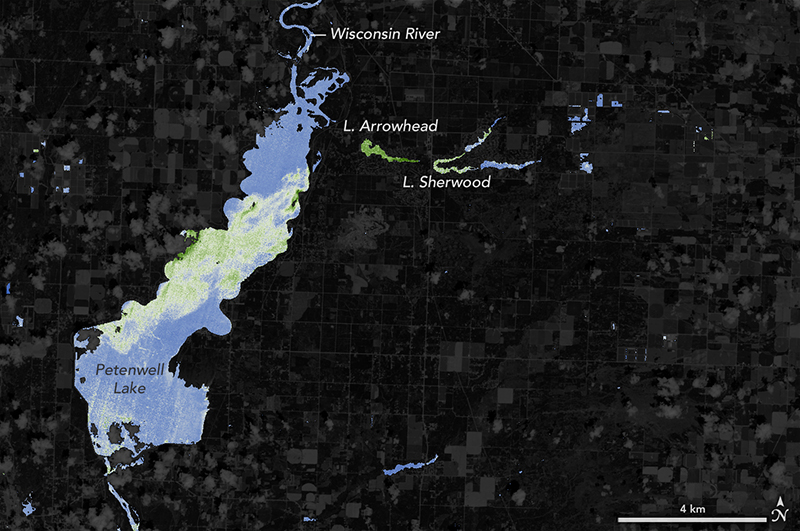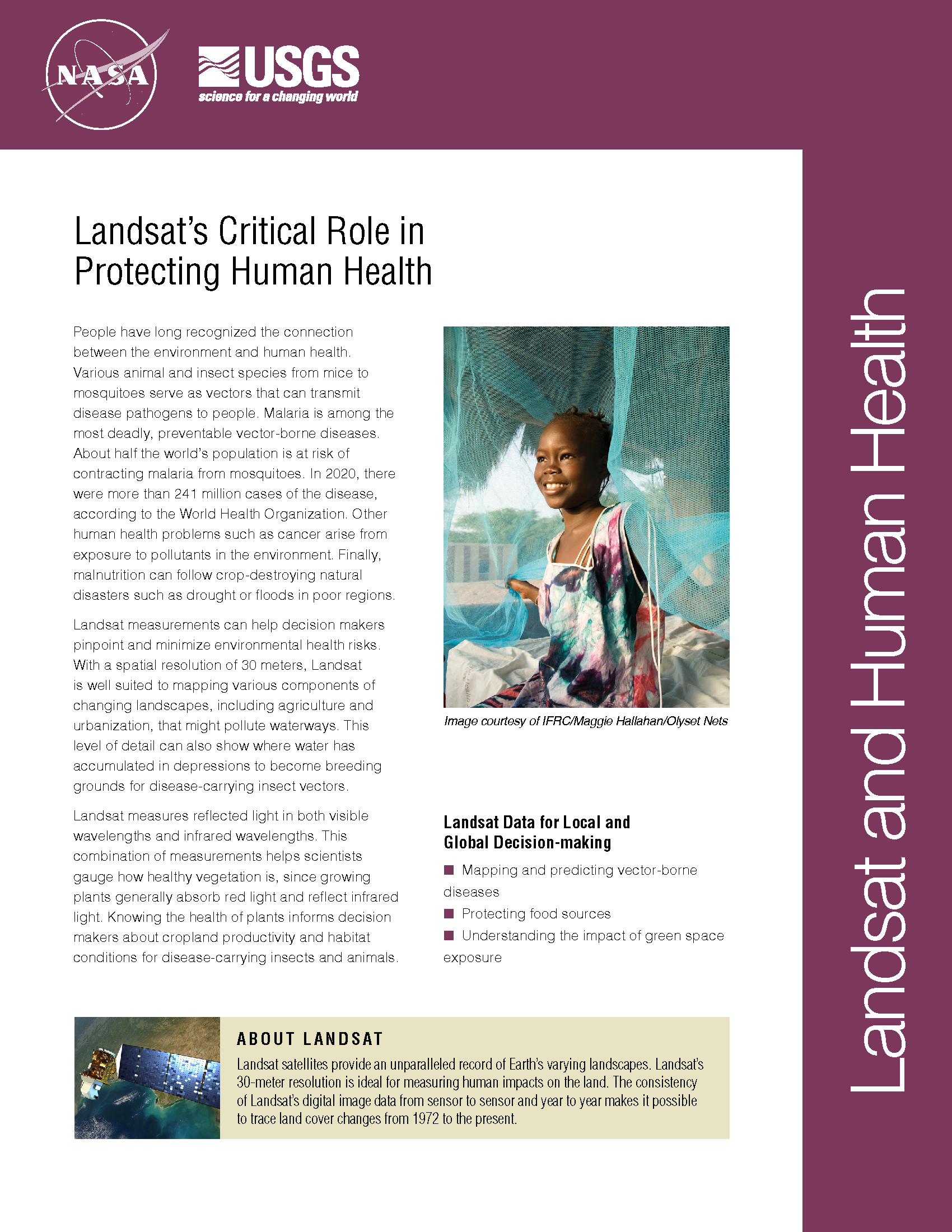Landsat’s Role in Protecting Human Health
People have long recognized the connection between the environment and human health. Various animal and insect species from mice to mosquitoes serve as vectors that can transmit disease pathogens to people. Malaria is among the most deadly, preventable vector-borne diseases. About half of the world’s population (3.3 billion people) is at risk of contracting malaria from mosquitoes, according to the World Health Organization. Other human health problems such as cancer arise from exposure to pollutants in the environment. Finally, malnutrition can follow crop-destroying natural disasters such as drought or floods in poor regions. Landsat measurements can help decision makers pinpoint and minimize environmental health risks. With a spatial resolution of 30 meters, Landsat is well suited to mapping various components of changing landscapes, including agriculture and urbanization, that might pollute waterways. This level of detail can also show where water has accumulated in depressions to become breeding grounds for disease-carrying insect vectors. Landsat measures reflected light in both visible wavelengths and infrared wavelengths. This combination of measurements helps scientists gauge how healthy vegetation is, since growing plants generally absorb red light and reflect infrared light. Knowing the health of plants informs decision makers about cropland productivity and habitat conditions for disease-carrying insects and animals.

How Urban Heat Affects the Socially Vulnerable in Sun Belt Cities
Socio-economically vulnerable populations are at a higher risk of experiencing urban heat effects.

Lakes Worldwide Are Experiencing More-Severe Algal Blooms, 30-years of Landsat Data Shows
The intensity of summer algal blooms has increased over the past three decades, according to a first-ever global survey of dozens of large, freshwater lakes.

Hot in the City, And Hotter Still in Low-Income Areas
A new investigative report published by NPR has found that it’s hotter in cities’ low income areas.

NASA Helps Warn of Harmful Algal Blooms in Lakes, Reservoirs
With limited resources to dedicate to monitoring for harmful algal blooms, water managers are looking to new technologies from NASA and its partners to detect and monitor potential hazards in lakes and reservoirs.

Green Space is Good for Mental Health, Landsat Helps Establish
The prolonged presence of green space is intrinsic for a healthy society a new nationwide Danish study finds.

How Looking for Clouds Helped Forecast Global Food Production
It started as an algorithm to detect clouds in satellite imagery, but now the software is being used for everything from increasing food security in the developing world to guiding futures trading on Wall Street.


